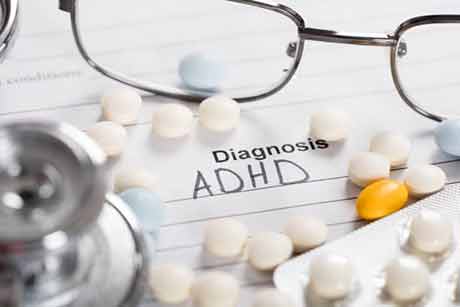If you’re wondering, “How Is ADHD Tested and Diagnosed?” here are a few steps to follow. The first step is to determine if the symptoms of ADHD were present before the age of twelve. Typically, a parent or another informant will corroborate these symptoms, which must have been present before the age of twelve. Next, the individual must have significant impairment in two major settings. The term “impairing” refers to how ADHD interferes with the person’s life. Impaired performance in work, school, and relationships can all be examples. The impairment can include losing a job, excessive conflict in a marriage, financial difficulties due to impulsive spending, and failing grades.
Psychological tests

A medical professional can use a variety of psychological tests to make the diagnosis of ADHD. They can conduct a physical exam and order blood tests and brain scans to rule out other underlying medical conditions. A medical professional may also interview the patient’s parents, siblings, teachers, coaches, or nannies to gather more information. Sometimes, a patient may be diagnosed with ADHD without any formal diagnostic tests. But in some cases, a medical professional can recommend these tests based on a patient’s history, symptoms, and other factors.
Other psychological tests are not only used to diagnose ADHD, but to make sure the child is experiencing a range of symptoms. These tests also screen for other comorbid learning disabilities. In addition to the behavioral indicators, a clinician may also use intelligence tests to determine the severity of the child’s learning disabilities. The standardized tests may show that the child has higher abilities than they are achieving. In some cases, the child may be so impulsive that they turn to substances for comfort.
Behavioral tests
Behavioral tests for ADHD Diagnosis can reveal a variety of different symptoms. Inattention, hyperactivity, and impulsivity are the main characteristics of ADHD. Various tests can be used to diagnose ADHD, and many times multiple stages of assessments are necessary to get enough information. Children with these symptoms may also have other problems, including depression, learning disabilities, and substance abuse. In addition to behavioral tests, psychiatrists and psychologists may also use other psychological or medical evaluations to make a final diagnosis.
The attention test, also known as the TAP, assesses the symptoms of ADHD in children and adolescents. The test uses a series of 600 stimuli, 25% of which are randomly distributed targets. The child is required to press a clicker when two stimuli are the same. The test produces scores for three core symptoms of ADHD. A motion tracking system measures the child’s movements and provides a weighted index of these.
Medical examinations
Adults with ADHD may feel frustrated or embarrassed about their ongoing problems. It’s important to discuss these issues with their healthcare provider openly and honestly, without holding back information for fear of being judged or shamed. Accurate information will help the healthcare professional identify and diagnose the disorder. However, there are certain things to know before you schedule an appointment with a physician. Here are some tips for ensuring an accurate medical examination.
The first step in diagnosing ADHD is to find out if symptoms have developed prior to the age of 12. A parent or other adult must corroborate these symptoms. The next step is to find out if the child has significant impairment in two major settings. By “impairing,” we mean that ADHD has interfered significantly with a person’s life, or is causing him or her to fail in school or at work.
NEBA system
The NEBA System is a non-invasive, 15 to 20-minute test used to measure a ratio between two standard brain wave frequencies (theta/beta) in children. In children with ADHD, this ratio is higher than in children who do not have the disorder. The FDA reviewed the NEBA System through a de-novo classification process, which is a regulatory path for low and moderate-risk medical devices. But, it is not equivalent to legally-marketed medical devices and has not been shown to be effective in ADHD diagnosis.
Researchers conducted a study on 275 children and evaluated the results against assessments made by independent experts. The results showed that children who had low TBR scores were more likely to have other, less serious conditions, such as sensory deficits, head injuries, and psychiatric disorders. The NEBA system’s high TBR values were also found to be related to higher reference prevalences for ADHD. In addition, the NEBA system increased the positive predictive value of ADHD.
